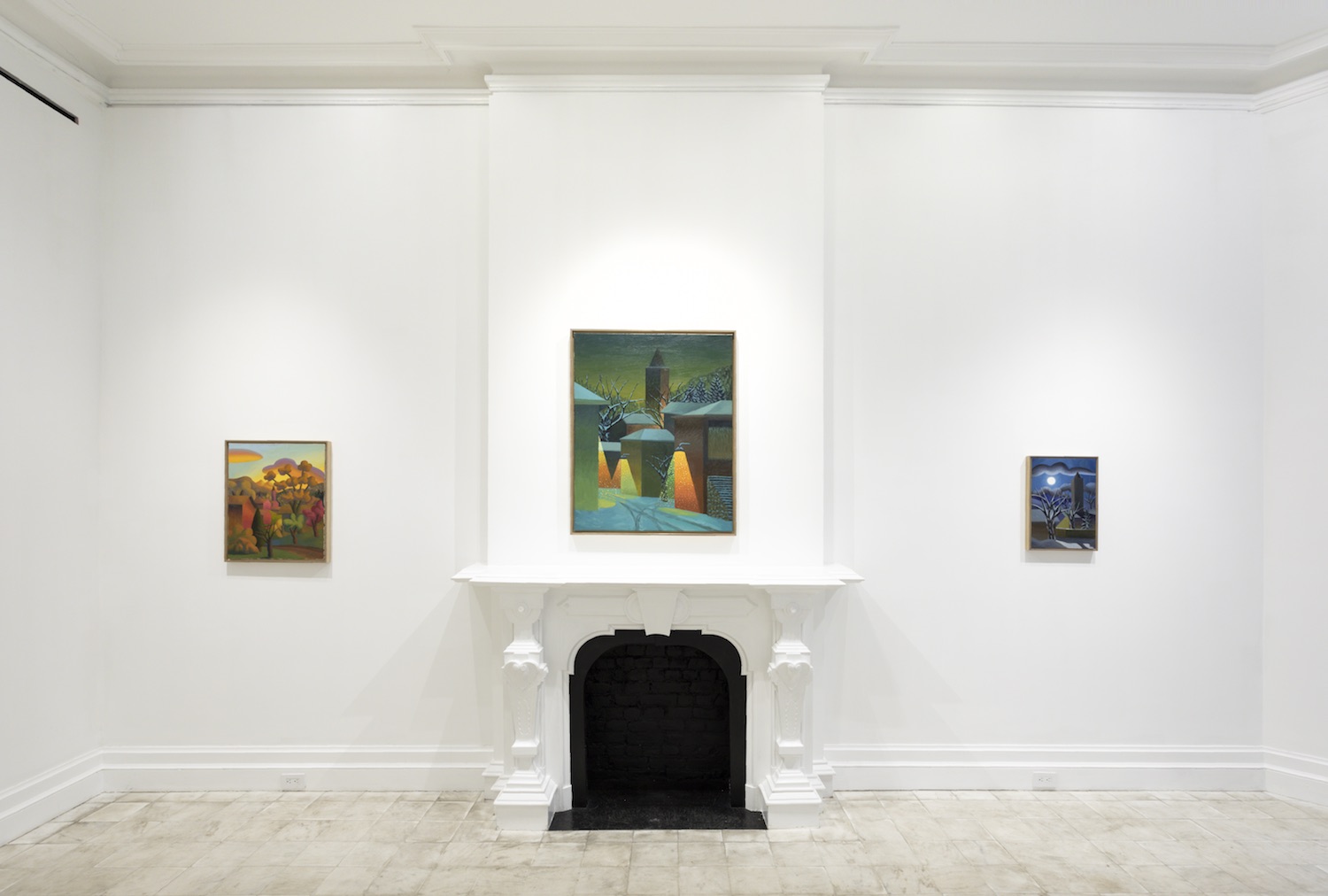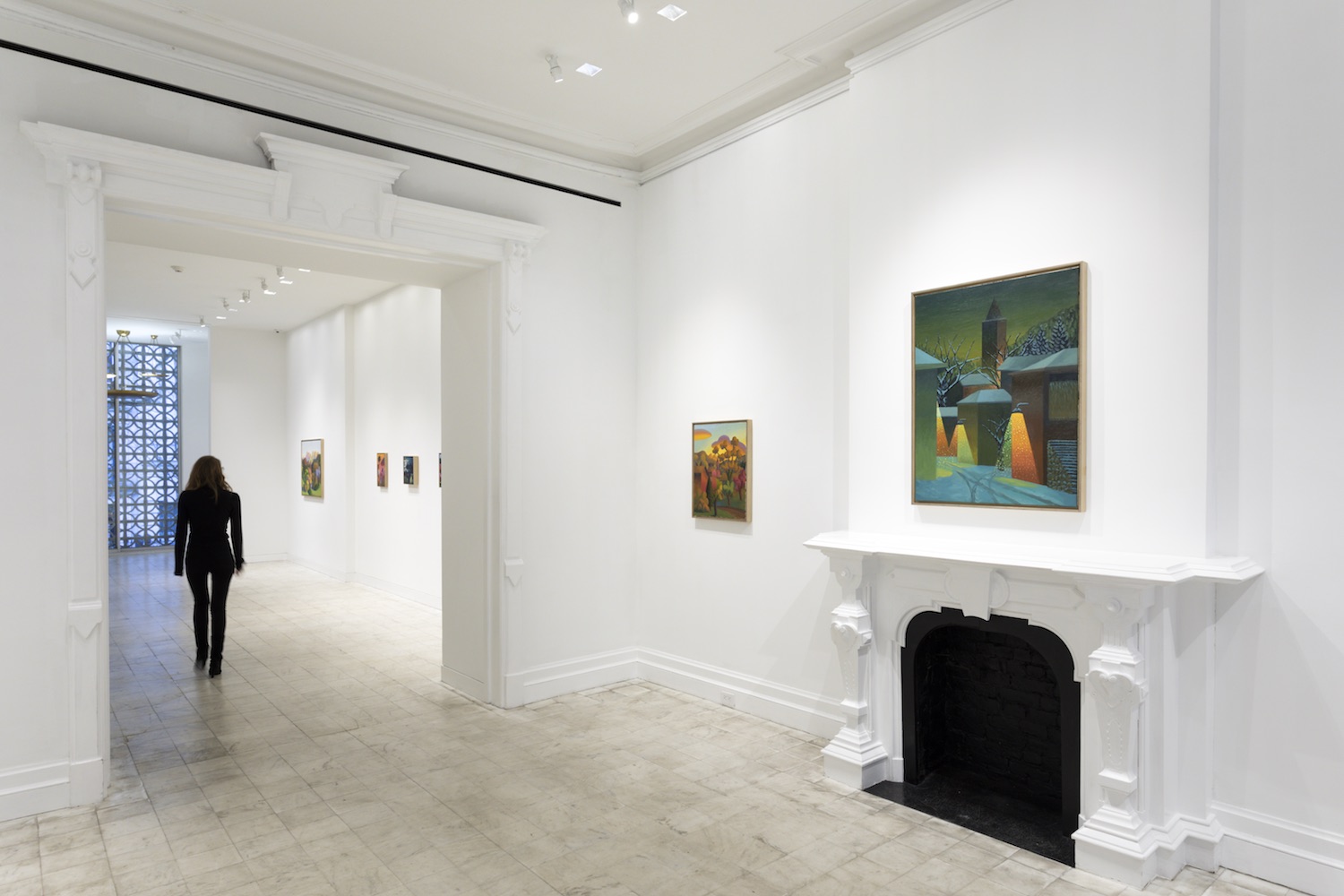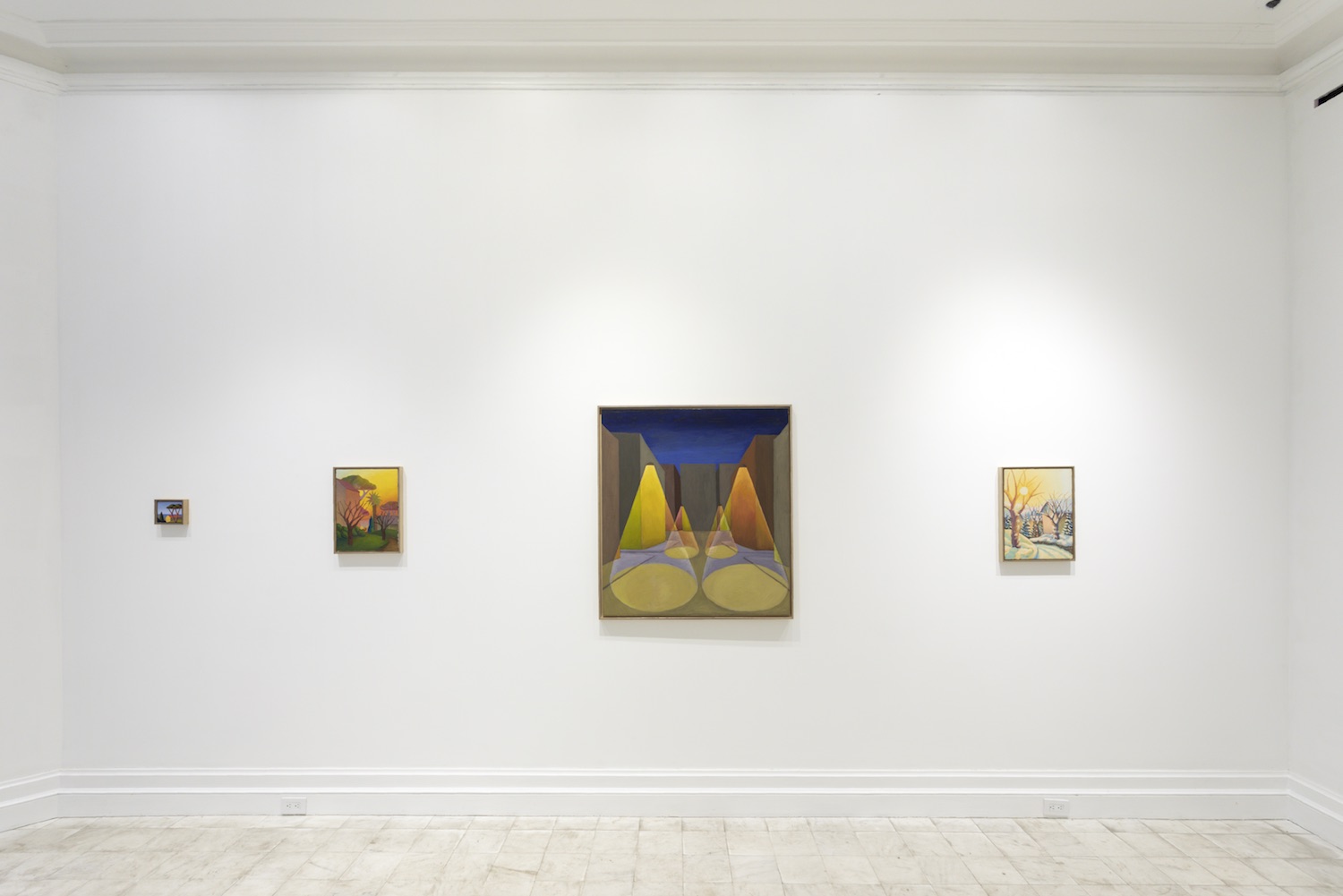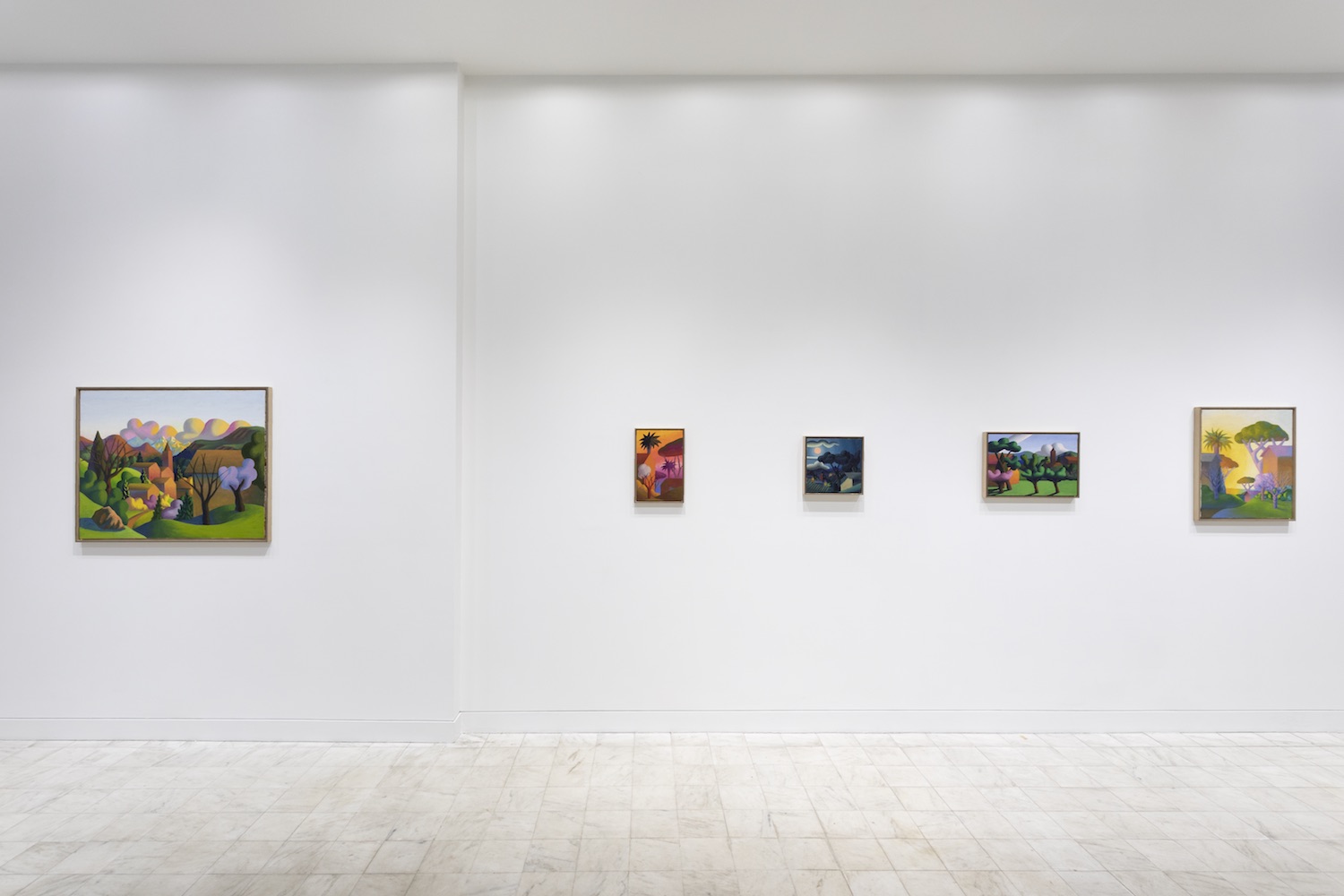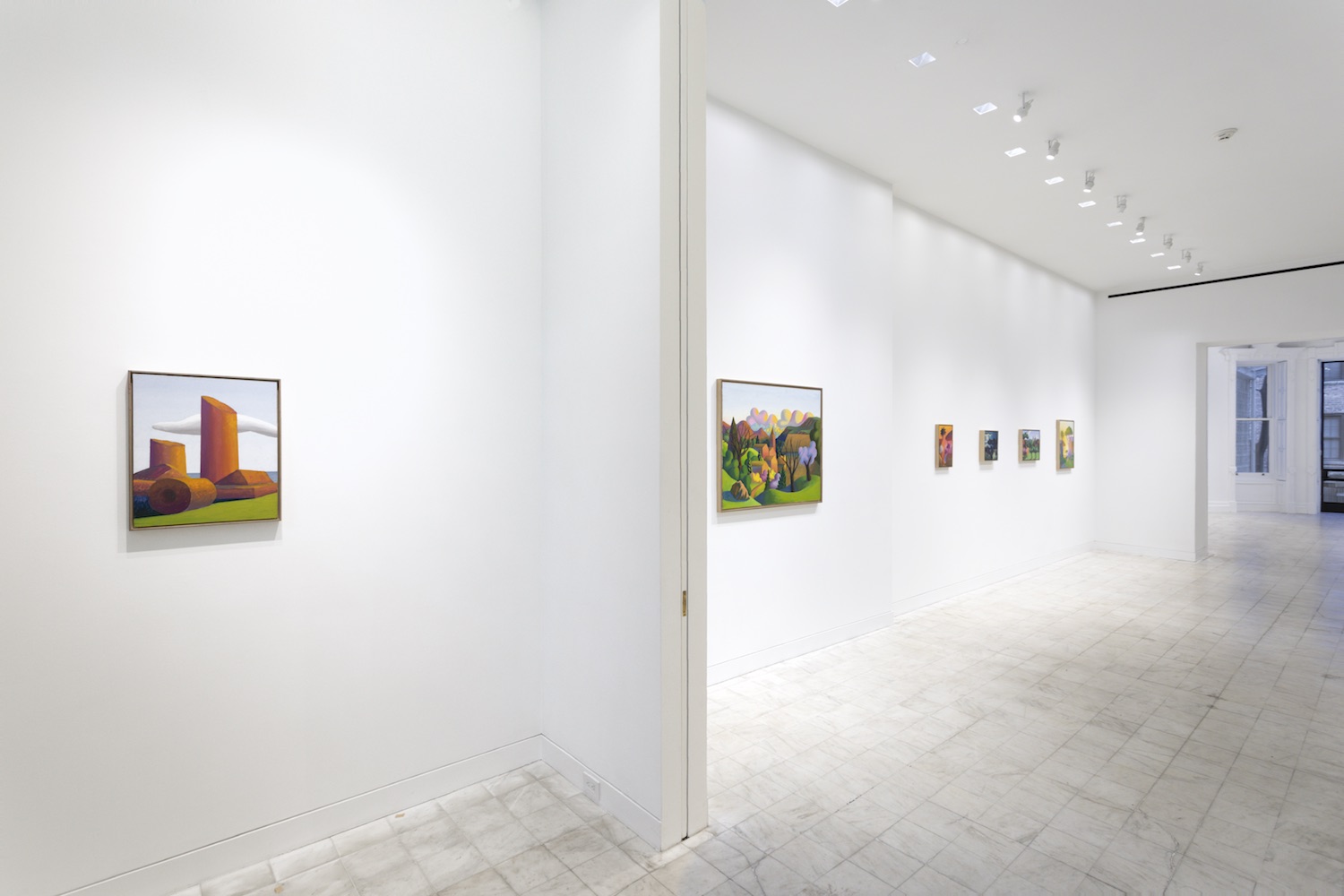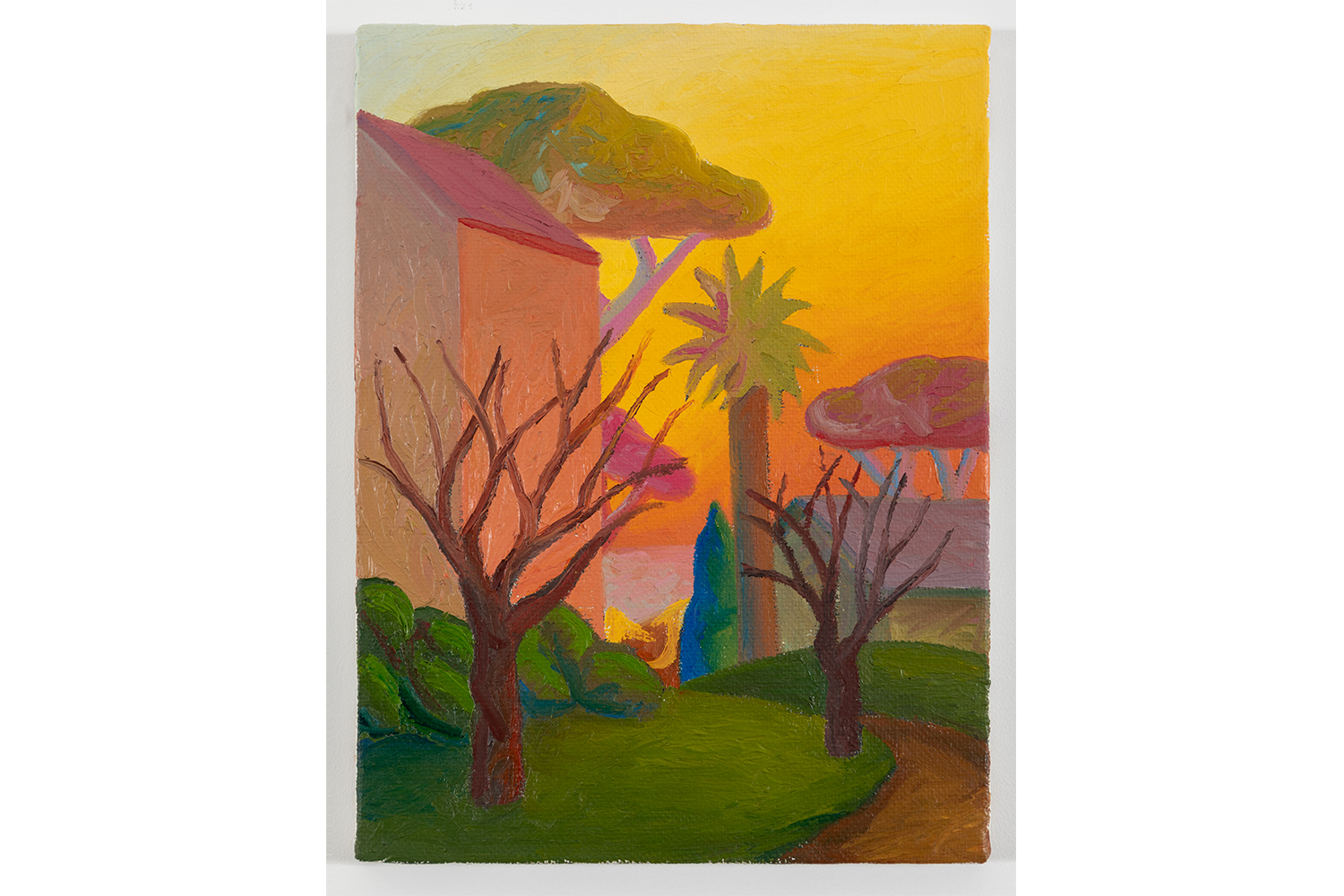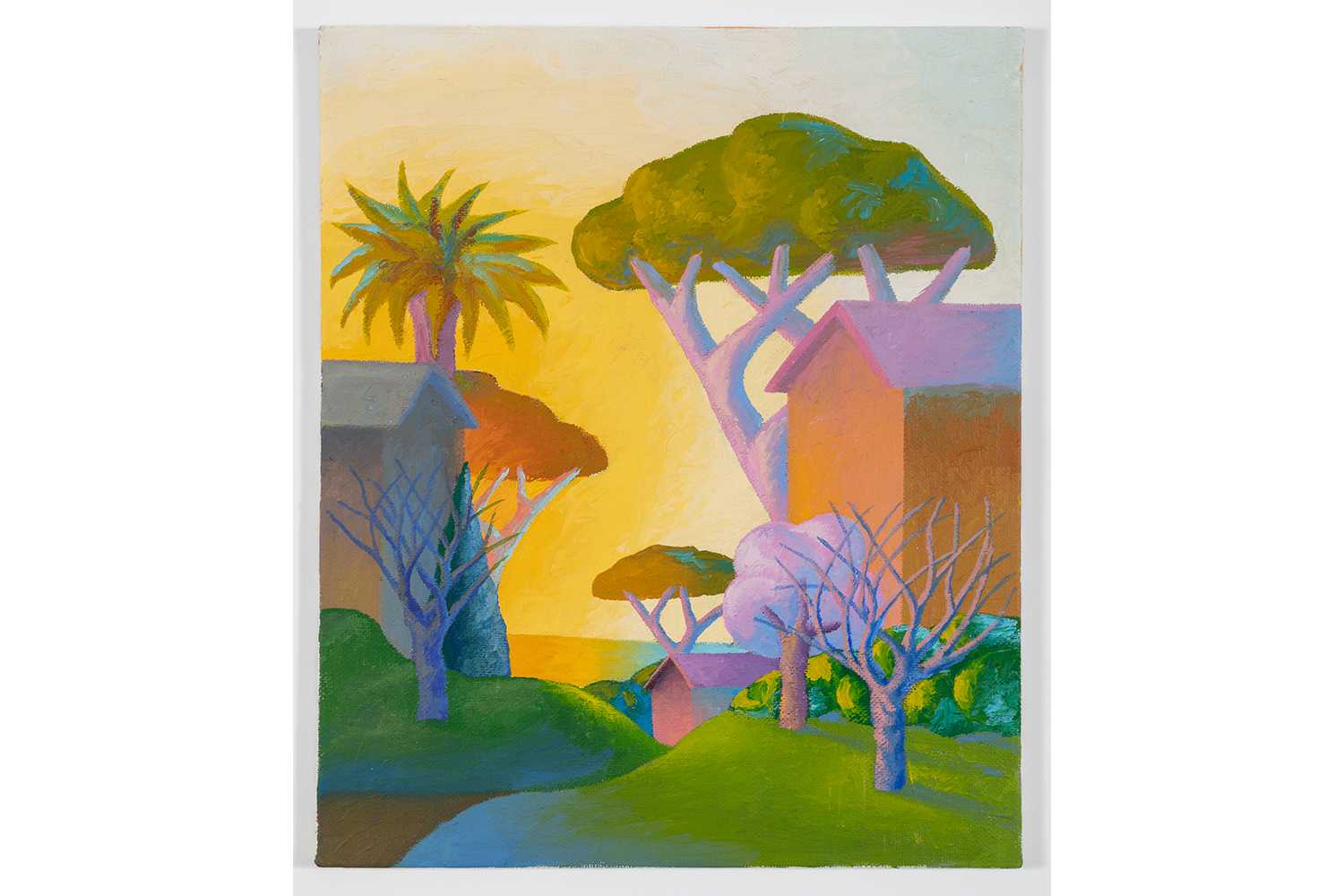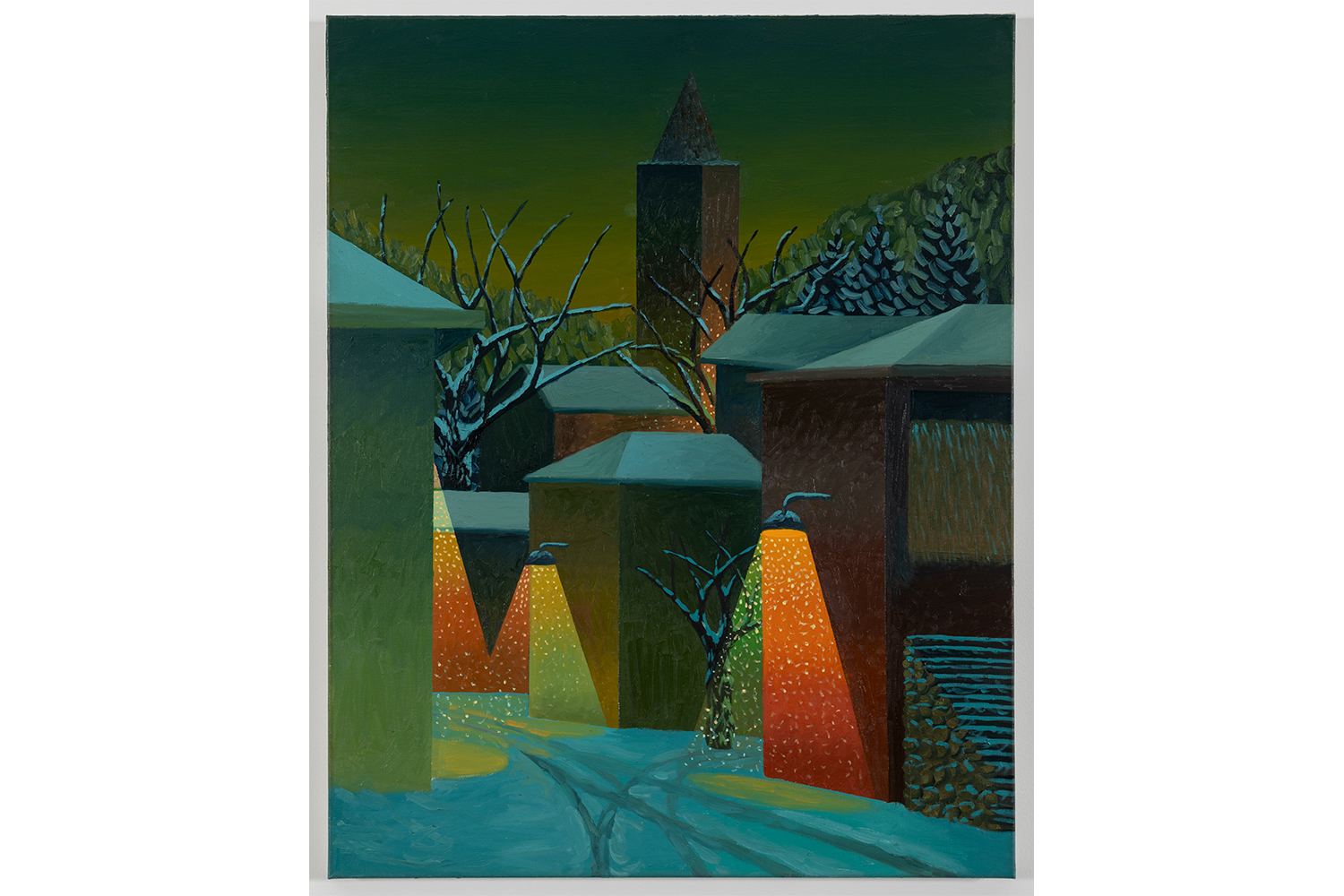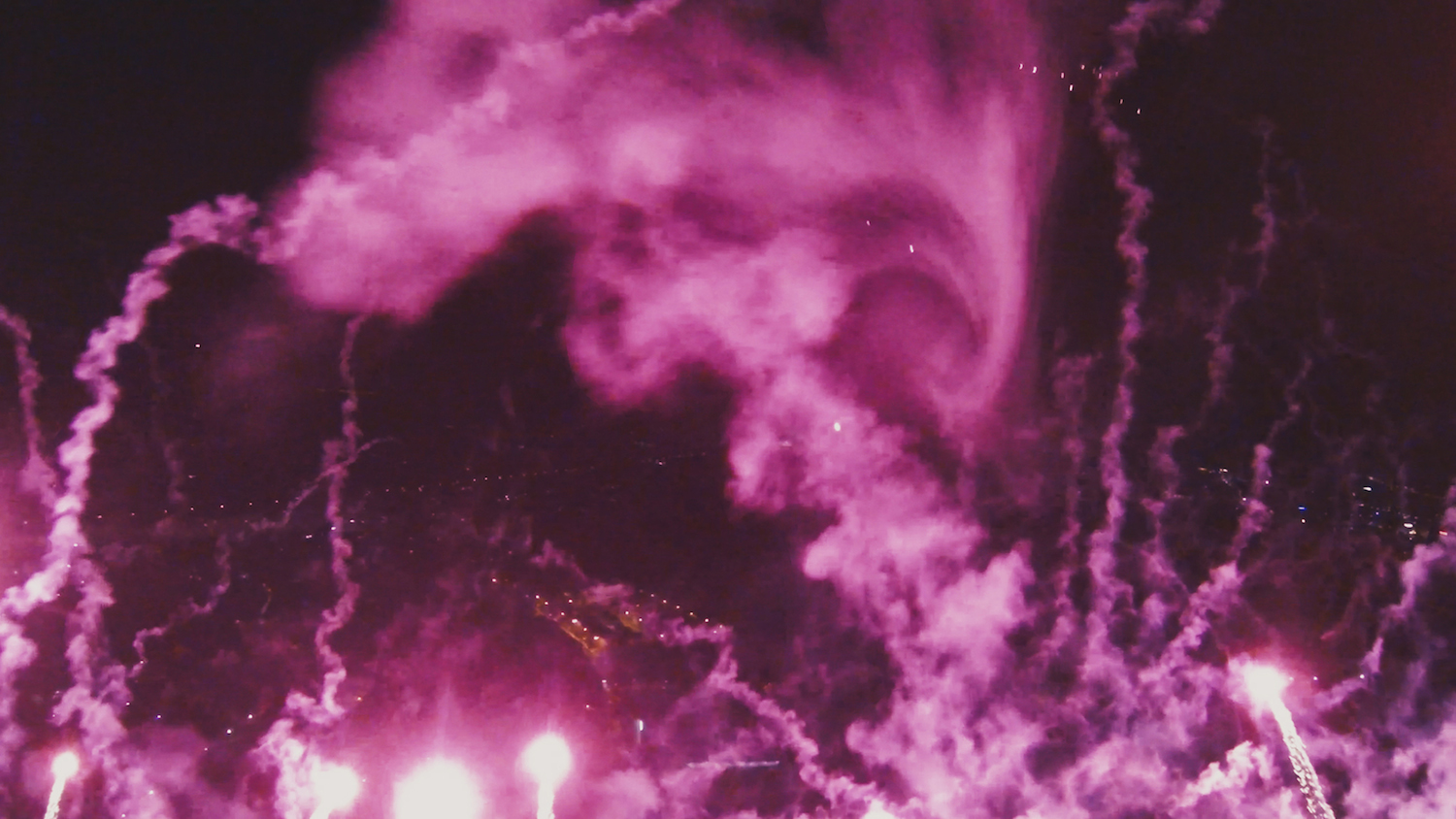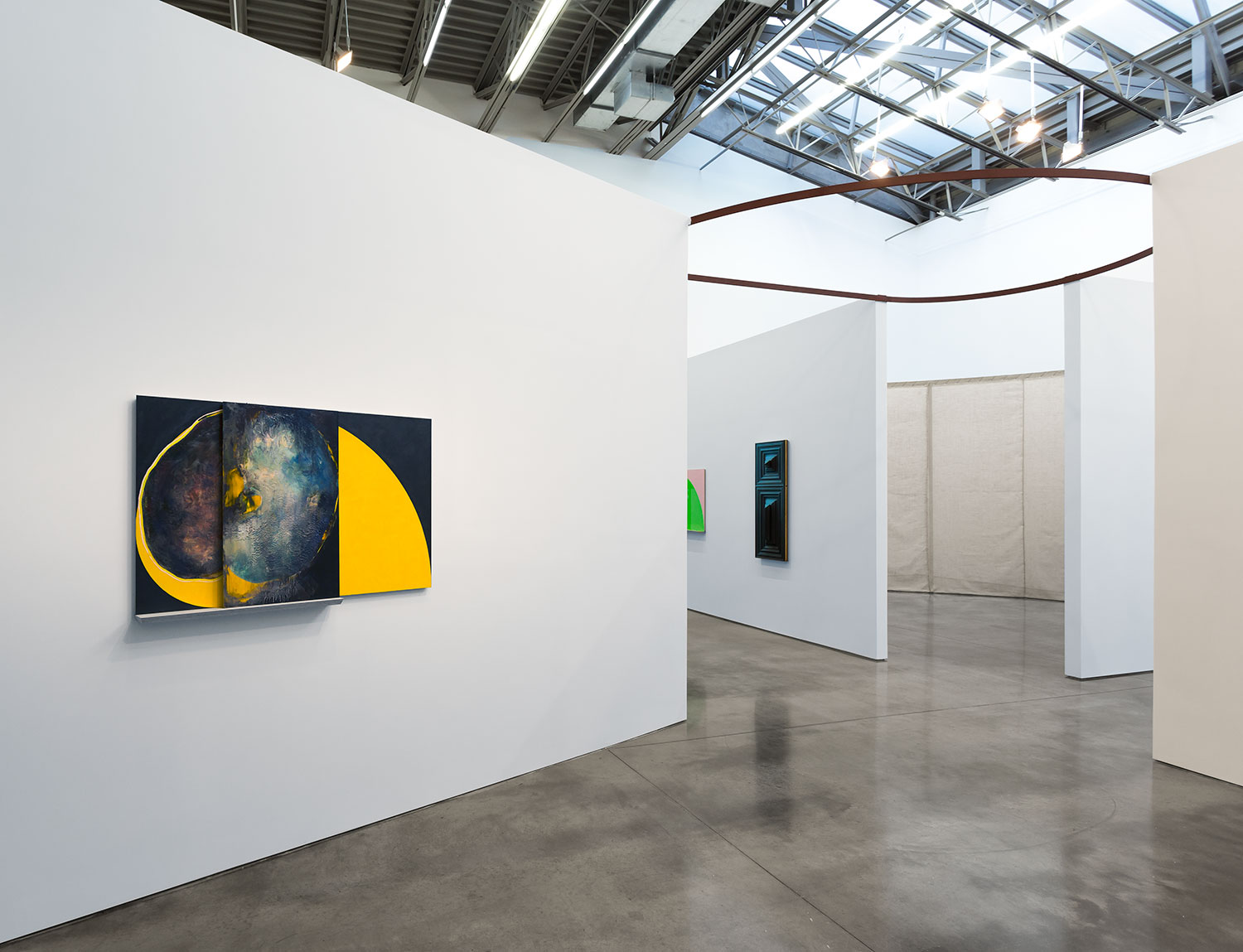“Even in art, are the foundations unfounded?” wondered Salvo in his book Della Pittura / On Painting / Über die Malerei (Cologne: Buchhandlung Walther König, 1986). There is a certain affinity between the Italian artist Salvo and the American architect Edward Durell Stone, former inhabitant and author of the renovation of the Upper East Side townhouse that is today home to Gladstone 64. Known as an early advocate of the International Style, after World War II, Durell Stone moved toward a warmer, more ornate vocabulary derived from vernacular architecture. Such a transition becomes visible in a comparison between the austere modernist lexicon of his design for the Museum of Modern Art’s new building on Fifty-Third Street in New York (1939) and the embroidered 1956 façade of the townhouse mentioned above, where Salvo’s exhibition takes place.
Likewise, after participating in Harald Szeemann’s Documenta V (1972), the late Italian artist repudiated his association with the Arte povera movement to embrace the possibilities of romantic historicism. He abandoned what he had described as the constraints of the “black-and-white” aesthetic that was dominating the Italian art scene of the late 1960s, and rehabilitated figurative painting a decade ahead of its international resurgence.
The exhibition at Gladstone 64 explores Salvo’s relationship with painting via works realized after 1980. The only exception is Autoritratto come Raffaello (“Self-portrait as Raphael”, 1970), displayed at the entrance of the show. This work is part of a series of staged photographs and photomontages depicting the artist in the guise of different professional figures and historical characters, thus exploring the possibility of performing multiple identities. Through conceptual strategies of representation, Salvo offers a meditation on the essence of artistic practice and the role of the artist as a mediator between history and the present. The presence of this work in the exhibition testifies to the photographic practice that defined — alongside his text-oriented works — his earlier phase, and also foretells the artist’s deeper engagement with the great masters of painting. Additionally, Autoritratto come Raffaello highlights the militant self-awareness of the paintings that comprise the main body of the exhibition.
On the main floor, a number of small-to- medium-size oil paintings depict lyrical landscapes and desolate cityscapes. The titles of these works resonate with the idea of time. They emphasize the psychological implications of lighting conditions and their variation during the day or over months and seasons. Escapist at heart, these paintings convey the impression of timelessness. At the same time, the triviality of their subject matter becomes the bearer of a nostalgic intimacy and longing for solitude. Their style combines staged naiveté with sophisticated metaphysical tones.
The subject matter and the chromatic audacity lend a Fauve-like touch to works such as Paesaggio (“Landscape”, 1983), Senza titolo (“Untitled”, 1988), and Una sera (“One Evening”, 1994), and express a taste for a Post-Impressionist palette. Yet, above all other references, it is an affinity with the metaphysical style of Giorgio de Chirico and Carlo Carrà that is most striking. This is particularly evident in works such as Capriccio (1993), Notte d’inverno (“Winter Night”, 1995), and Untitled (1980). In these paintings, dense brushstrokes, solidly constructed compositions, and heavy, tactile shadows hint at Salvo’s Italian predecessors.
In Salvo’s works, the rehabilitation of popular imagery through the lens of art history introduces a form of citationism that is not about copy and repetition so much as an anthropological investigation into the roots of the discipline of painting. Asked whether he considered his works modern or postmodern, Salvo rebutted that he deemed himself a classicist. As he concludes in his book, “The foundation is common, the expression cannot be.”

